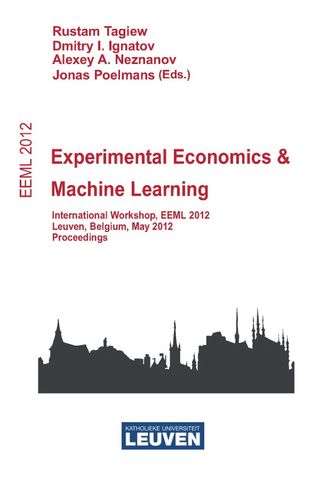В книге

Leuven: Katholieke Universiteit Leuven, 2012.
Kirillov A., Gavrikov M., Лобачева Е. М. и др., , in: Proceedings of the 27th British Machine Vision Conference. -, 2016. P. 1–12.
The Shape Boltzmann Machine (SBM) and its multilabel version MSBM have been recently introduced as deep generative models that capture the variations of an object shape. While being more flexible MSBM requires datasets with labeled parts of the objects for training. In the paper we present an algorithm for training MSBM using binary masks of ...
Добавлено: 24 февраля 2017 г.
Осокин А. А., Ветров Д. П., IEEE Transactions on Pattern Analysis and Machine Intelligence 2015 Vol. 37 No. 7 P. 1347–1359
In this paper we address the problem of finding the most probable state of a discrete Markov random field (MRF), also known as the MRF energy minimization problem. The task is known to be NP-hard in general and its practical importance motivates numerous approximate algorithms. We propose a submodular relaxation approach (SMR) based on a ...
Добавлено: 6 июля 2015 г.
In the paper we present a new framework for dealing with probabilistic graphical models. Our approach relies on the recently proposed Tensor Train format (TT-format) of a tensor that while being compact allows for efficient application of linear algebra operations. We present a way to convert the energy of a Markov random field to the ...
Добавлено: 18 марта 2015 г.
Арефьев Н. Г., / NRU Higher School of Economics. Series WP BRP "Economics/EC". 2014. No. WP BRP 79/EC/2014.
Я предлагаю метод идентификации структурных векторных авторегрессий (SVAR) и систем одновременных уравнений (SEMs) с ортогональными структурными шоками, который использует тестируемые идентификационные ограничения. Если выполняются некоторые условия разряженности, предложенный метод позволяет найти набор тестируемых ограничений, достаточных для полной идентификации. Метод базируется на теории вероятностных моделей на графах и на теории идентификации SVAR и SEM, объединяя их ...
Добавлено: 28 ноября 2014 г.
Kohli P., Осокин А. А., Jegelka S., , in: Proceedings of the IEEE Conference on Computer Vision and Pattern Recognition (CVPR 2013). Portland: IEEE, 2013. P. 1971–1978.
Добавлено: 19 октября 2017 г.
Ветров Д. П., Kohli P., Osokin A. и др., Lecture Notes in Computer Science 2015 Vol. 8932 P. 406–420
Добавлено: 9 апреля 2015 г.
Бартунов С. О., Korshunov A., Park S. и др., , in: Proceedings of the 6th International Conference on Knowledge Discovery and Data Mining, Workshop on Social Network Mining and Analysis. ACM, 2012.
Добавлено: 4 марта 2015 г.
Арефьев Н. Г., / Series WP BRP "Basic research program". 2016. No. 124/EC/2016.
Добавлено: 14 апреля 2016 г.
Delong A., Veksler O., Осокин А. А. и др., , in: Advances in Neural Information Processing Systems 26 (NIPS 2012). Lake Tahoe: Curran Associates, Inc., 2012.
Добавлено: 18 октября 2017 г.
Кириллов А. Н., Гавриков М. И., Лобачева Е. М. и др., Интеллектуальные системы. Теория и приложения 2015 Т. 19 № 2 С. 75–95
В данной работе рассматриваются модели формы объектов на изображении: бинарная и многоклассовая модели Больцмана. Предлагается новый алгоритм обучения многоклассовой модели формы Больцмана, для применения которого достаточно неполной разметки данных, а именно: бинарной разметки и задания семян, указывающих приближенное расположение частей объектов. ...
Добавлено: 30 сентября 2015 г.
Гречихин И. С., /. 2017.
Graphical models are used in a variety of problems to uncover hidden structures. There is a huge number of different identification procedures, constructed for different purposes. However, it is important to research different properties of such procedures and compare them in order to find out the best procedure or the best use case for some ...
Добавлено: 20 октября 2017 г.
Ветров Д. П., Осокин А. А., Новиков А. В. и др., , in: JMLR Workshop and Conference ProceedingsIssue 32: Proceedings of The 31st International Conference on Machine Learning. Beijing: Microtome Publishing, 2014. P. 811–819.
In the paper we present a new framework for dealing with probabilistic graphical models. Our approach relies on the recently proposed Tensor Train format (TT-format) of a tensor that while being compact allows for efficient application of linear algebra operations. We present a way to convert the energy of a Markov random field to the ...
Добавлено: 14 марта 2015 г.